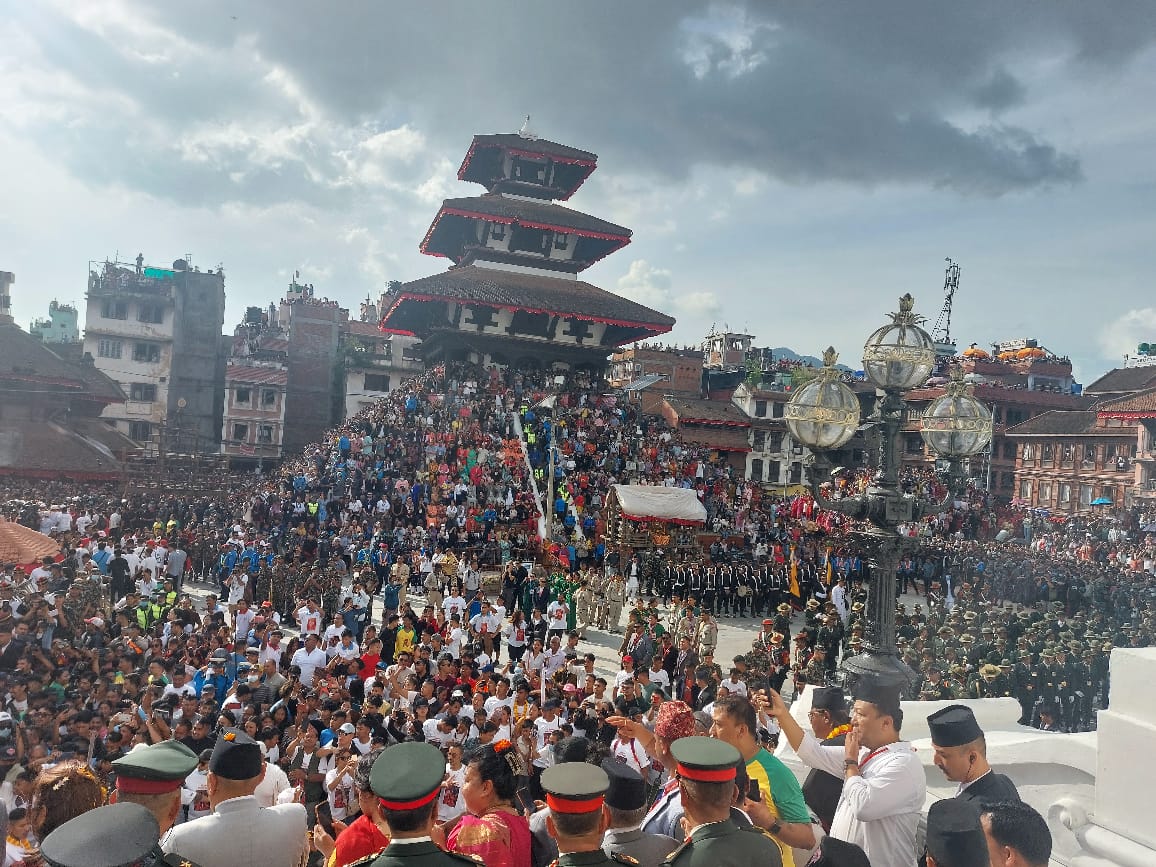Kathmandu: President Ramchandra Paudel observed the Indra Jatra festival today at the Hanumandhoka Durbar Square in Basantpur. The President made his way from the Juddha Salik at New Road to the Gaddi Baithak on foot.
Since last year, President Paudel has taken to walking the route from Juddha Salik to Gaddi Baithak. Upon reaching Gaddi Baithak, he made offerings to the chariots of Lord Ganesh, Lord Bhairav, and Goddess Kumari, which marked the beginning of their procession.
Notable attendees at the Indra Jatra observation included Vice President Ramsahay Prasad Yadav, Prime Minister KP Sharma Oli, Chief Justice Vishwambhar Prasad Shrestha, Speaker Devaraj Ghimire, National Assembly Chair Narayan Dahal, Deputy Prime Ministers Prakashman Singh and Vishnu Prasad Paudel, Home Minister Ramesh Lekhak, Minister for Culture, Tourism, and Civil Aviation Badri Prasad Pandey, along with members of the Council of Ministers, lawmakers, provincial assembly members, heads of diplomatic missions in Nepal, local representatives, and other prominent figures. A large crowd of citizens also gathered to witness the festival.
The main day of the Indra Jatra, which began with the raising of the Indra Dhwaja on the morning of Bhadra Shukla Dwadashi, was celebrated today. Hari Prasad Suvedi, the head of the Guthi Institution’s religious division, reported that the chariot procession would continue in Tallo Tol, with another procession scheduled for the Upper Tol tomorrow.
On October 5, Saturday, women will exclusively pull the chariots for the Nani Cha procession. On the same day, President Paudel will receive Tika and Prasad from Kumari during the day. It is customary for the head of state to exchange a sword with Kumari after receiving the Tika and Prasad.
The Indra Jatra will conclude with the lowering of the Indra Dhwaja at 10:31 PM on October 5. The festival is believed to have been established during the reign of King Pratap Malla, though the tradition of chariot processions was introduced by King Gunakama Dev. This festival is the longest of its kind celebrated in the Kathmandu Valley.
In addition to the traditional offerings to Indra, the deity of rain and prosperity, the festival also featured cultural performances including the Lakhe, Dashavatara, Mahakali, Ramchandra, and Pulukisi dances.
